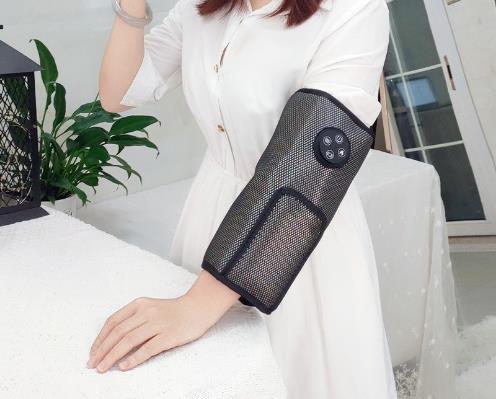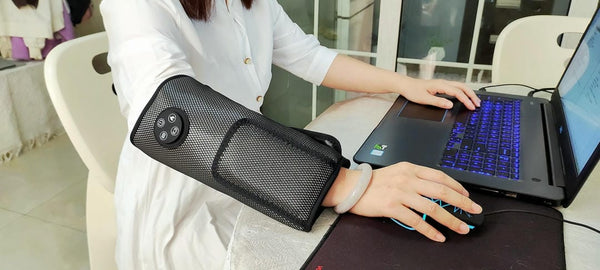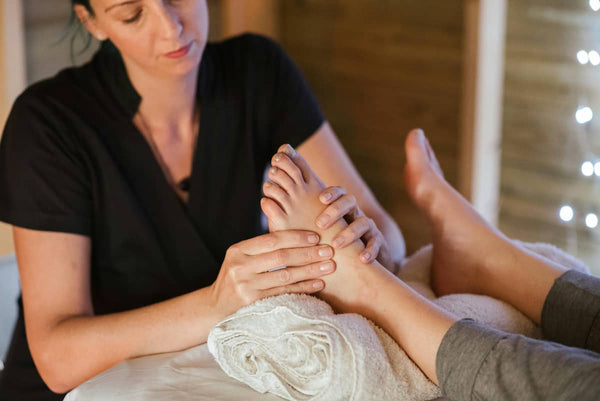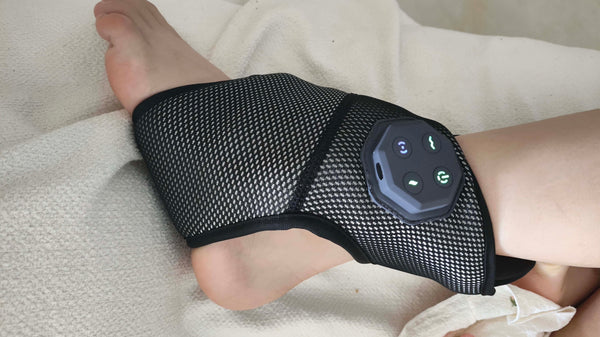 So, you've been battling lower back pain, perhaps from long hours at the desk as an office worker, or maybe a nagging sports injury that just won't quit. You’ve probably tried a few self-treatment strategies, maybe even invested in what you hoped were the best massagers for back, but the relief is fleeting, or worse, things feel aggravated. The question, "What did I do wrong?" is a common one I hear. It's easy to get frustrated. This guide is designed to be your rational pitfall avoidance companion. We'll explore common missteps in self-managing lower back pain and steer you towards more effective, science-backed solutions, including how to truly identify and use the best massagers for back as part of a sensible recovery plan. My goal here is to combine objective evaluation with practical advice to help you feel better and avoid common mistakes.
So, you've been battling lower back pain, perhaps from long hours at the desk as an office worker, or maybe a nagging sports injury that just won't quit. You’ve probably tried a few self-treatment strategies, maybe even invested in what you hoped were the best massagers for back, but the relief is fleeting, or worse, things feel aggravated. The question, "What did I do wrong?" is a common one I hear. It's easy to get frustrated. This guide is designed to be your rational pitfall avoidance companion. We'll explore common missteps in self-managing lower back pain and steer you towards more effective, science-backed solutions, including how to truly identify and use the best massagers for back as part of a sensible recovery plan. My goal here is to combine objective evaluation with practical advice to help you feel better and avoid common mistakes.
Understanding the nuances of massage for lower back pain is crucial. It’s not just about owning a device; it’s about the right device, the right technique, and understanding when self-care needs a professional eye. Let's make wellness accessible and empower you with knowledge to make lasting, positive changes. Many of the best massagers for back can be highly beneficial when used correctly.
Demystifying Lower Back Pain: Common Causes for Office Workers and Athletes
Lower back pain is a frequent complaint among office workers, often stemming from prolonged sitting and suboptimal ergonomics, and it's also a common issue for those with sports injuries due to acute trauma or repetitive strain. The immediate response is often to seek quick relief. However, without pinpointing the cause, self-treatment can be like navigating without a map. For office workers, issues like poor posture leading to muscle imbalances (perhaps neglecting the best sitting position for lower back pain) are prevalent. For athletes, it could be a muscle tear, ligament sprain, or disc issue from a sudden impact or overuse. While the symptoms might feel similar, the underlying mechanisms can differ vastly.
It's this complexity that makes self-treatment challenging. For example, applying aggressive massage to an acutely inflamed sports injury might delay healing, while an office worker might benefit from different techniques of back massage focused on releasing chronic tension. The search for the best massagers for back needs to be informed by these distinct needs. It's not uncommon to see individuals inadvertently worsen their condition by using tools or methods unsuited to their specific problem, especially if they experience lower back pain when walking and try to "push through it." This is a key area where a "pitfall avoidance" mindset is essential. Getting an accurate understanding often means considering the best massagers for back as part of a broader strategy.
- Office Workers: Prolonged static postures, inadequate lumbar support, repetitive micro-movements (like reaching for a mouse), leading to muscle fatigue and strain. The best sitting position for lower back pain is often overlooked.
- Sports Injuries: Acute sprains/strains from sudden movements, direct impact causing bruising or deeper tissue damage, overuse injuries leading to chronic inflammation (e.g., in runners or weightlifters), or even stress fractures in some cases.
- General muscle imbalances and core weakness.
- Herniated or bulging discs (can affect both groups).
- Sciatica, where pain radiates down the leg, often a concern for those with lower back pain when walking.
The Science of Soothing: How Smart Self-Care Aids Recovery
Our bodies are remarkably resilient, and a well-informed self-care approach can significantly aid the recovery process for many types of lower back pain. It's about working intelligently with your body's natural healing capabilities. For both office workers and those recovering from sports injuries, the goal is often to reduce inflammation, alleviate muscle tension, and restore normal function. This is where tools like the best massagers for back come into play, but their application needs a scientific rationale, not just hopeful guesswork.
Targeted massage, for instance, can enhance local blood flow. Think of it like this: increased circulation brings more oxygen and nutrients to tired or injured tissues, which can help flush out metabolic byproducts that contribute to soreness. This is a fundamental principle behind why many seek out massage for lower back pain. Furthermore, mechanical stimulation from massage can help to interrupt pain signals and promote muscle relaxation by affecting nerve receptors. Modern devices, some of which are considered the best massagers for back, aim to leverage these physiological responses. Combining this with appropriate stretching and movement helps maintain tissue pliability and support, creating a synergistic effect that many individuals find beneficial for long-term comfort and resilience. Understanding these mechanisms helps in choosing the best massagers for back for your specific situation.
- Improved local circulation, aiding in the delivery of oxygen and removal of waste products.
- Modulation of pain perception through the gate control theory or release of endorphins.
- Reduction in muscle hypertonicity (excessive tightness) and trigger point sensitivity. Careful techniques of back massage are vital here.
- Enhanced flexibility and range of motion when combined with a stretching regimen and attention to the best sleeping position for lower back pain.
- A psychological boost from taking proactive steps in one's own recovery, supported by some of the best massagers for back.
Choosing Wisely: A Look at Massager Types for Lower Back Relief
As a consultant for family health product selection, I've evaluated countless devices. The market for back massagers is saturated, and it's easy to get swayed by marketing rather than evidence of efficacy. The key to finding the best massagers for back is to match the device's features to your specific needs – whether you're an office worker with chronic stiffness or an athlete managing a recovering injury. Not every tool is right for every situation.
For instance, Perspective 3 highlights a very practical approach: "Combining milder massage tools (such as the Multi-functional Portable Waist Massager. Its description should include four functions (pressure, vibration, heating, red light) with adjustable settings + combinable massage modes, with a 15-minute timer, safe and easy to use) with stretching yields better results." This is a sound principle. A device like the described Multi-functional Portable Waist Massager offers a suite of therapeutic options – air pressure can provide a gentle, rhythmic compression; vibration can soothe superficial muscle tension; heating can relax tissues and improve blood flow; and red light therapy is being explored for its potential in tissue repair and inflammation reduction. The adjustable settings and combinable modes allow for a personalized approach, which is crucial. Such features make it a strong candidate for one of the best massagers for back for versatile home care. The 15-minute timer is a good safety feature, preventing overuse. The ability to use it on the waist, abdomen, and buttocks adds to its utility for comprehensive core area care. Its portability for home, travel, and even car use (passengers only, or when parked for safety) is a significant plus for busy office workers or athletes on the go.
- Multi-functional Portable Waist Massager: As detailed above, these are excellent for their combined therapeutic actions (pressure, vibration, heat, red light), adjustability, and portability. Their targeted approach for the core region makes them one of the best massagers for back, particularly for lumbar issues often seen in office workers. Safe use is paramount; the 15-minute timer is a practical feature.
- Multi-functional Electric Massagers (Handheld/Wand Style): These offer adaptability for reaching various parts of the back and other muscle groups. Look for models with diverse attachments (kneading, tapping) and variable intensity. Their focused application can be beneficial when specific techniques of back massage are needed for trigger points, often making them one of the best massagers for back for targeted relief.
- Percussive/Massage Guns: Powerful, yes, but Perspective 1 correctly warns that incorrect use (e.g., excessive pressure, especially on an inflamed sports injury) can exacerbate muscle redness and inflammation. Use with extreme caution on the lower back, lowest settings, and never on bone. While some athletes find them useful for pre/post-workout, they are not universally the best massagers for back for every type of pain.
- General Air Pressure Massagers (Larger Wraps/Mats): These provide broader, often gentler, compression which can be excellent for promoting overall relaxation and circulation. They may be suitable for winding down after a long day or as a milder recovery tool.
Smart Application: Maximizing Benefits and Minimizing Risks
 Owning one of the best massagers for back is only half the battle; using it correctly is where the real benefit—or potential harm—lies. A common mistake I observe is the "no pain, no gain" fallacy applied to self-massage. This is particularly risky for sports injuries or even chronic office-related back pain. Aggressive techniques can irritate already sensitive tissues. The guiding principle should always be: listen to your body. Effective techniques of back massage focus on relief, not endurance.
Owning one of the best massagers for back is only half the battle; using it correctly is where the real benefit—or potential harm—lies. A common mistake I observe is the "no pain, no gain" fallacy applied to self-massage. This is particularly risky for sports injuries or even chronic office-related back pain. Aggressive techniques can irritate already sensitive tissues. The guiding principle should always be: listen to your body. Effective techniques of back massage focus on relief, not endurance.
Start with lower intensity settings and shorter durations. For a device like the Multi-functional Portable Waist Massager, one 15-minute cycle is a good initial exposure. See how your body responds over the next 24 hours before increasing intensity or frequency. Avoid applying direct, deep pressure over the spinal column itself; focus on the muscles on either side. If you experience sharp, shooting, or worsening pain, stop immediately. It's also critical to complement massage with other healthy habits. For office workers, this means incorporating movement breaks and ensuring your workspace ergonomics support the best sitting position for lower back pain. For athletes, it means appropriate warm-ups, cool-downs, and not rushing back into activity post-injury. And for everyone, optimizing the best sleeping position for lower back pain can make a huge difference in daily comfort and recovery, especially if you deal with lower back pain when walking. These integrated habits ensure the best massagers for back work effectively.
- Gradual Introduction: Always start with the lowest settings and shortest durations (e.g., the 15-minute timer on specific devices).
- Body Awareness: Differentiate between the "good hurt" of releasing tension and actual pain that signals a problem. Sharp pain means stop or adjust. This is a core tenet of safe techniques of back massage.
- Avoid Bony Prominences: Focus on muscular areas, not directly on the spine.
- Consistency Over Intensity: Regular, gentle massage is often more beneficial than sporadic, aggressive sessions.
- Holistic Habits: Combine with stretching, proper posture (especially the best sitting position for lower back pain for office workers), hydration, and ensuring the best sleeping position for lower back pain to manage issues like lower back pain when walking. These habits support the work of the best massagers for back.
Knowing Your Limits: When to Call in the Professionals
While self-care with tools like the best massagers for back can be incredibly empowering, it's crucial to understand their limitations and when professional assessment is non-negotiable. This is where Perspective 2 strongly resonates: "Professional assessment is recommended - self-treatment cannot address the root causes such as posture/imbalance." As an evaluator, I stress that massagers primarily address symptoms like muscle tightness and discomfort. They are not a panacea for all underlying causes of back pain, especially complex postural issues common in office workers or significant sports injuries.
If your lower back pain is severe, persistent despite careful self-care (even with the best massagers for back), getting worse, or accompanied by "red flag" symptoms, it's imperative to consult a healthcare professional (doctor, physical therapist, chiropractor). They can perform a thorough diagnostic evaluation to identify the specific source of your pain. This is particularly vital for office workers with chronic issues or athletes with acute injuries. A professional can devise a tailored treatment plan, which might include specific therapeutic exercises, manual therapy, or other interventions that go beyond what even the most sophisticated massage for lower back pain device can achieve alone. Think of it this way: the best massagers for back can be excellent supporting actors, but sometimes you need a director (your healthcare professional) to orchestrate the whole recovery play.
- Pain that is severe, unremitting, or worsens despite a week or two of gentle self-care.
- Pain resulting from a significant trauma or sports injury.
- Neurological symptoms: numbness, tingling, weakness, or radiating pain into the legs/feet (common with sciatica).
- Systemic symptoms: unexplained fever, weight loss, or changes in bowel/bladder function.
- A history of conditions like osteoporosis or cancer, where new back pain warrants immediate medical review. In such cases, using even the best massagers for back should be cleared by a doctor.
Effectively addressing lower back pain, whether you're an office worker or dealing with a sports injury, is about a rational, informed approach. It involves understanding potential pitfalls, choosing tools like the best massagers for back (such as the versatile Multi-functional Portable Waist Massager) based on sound principles, and applying them with correct techniques of back massage. It’s also about integrating these efforts with broader lifestyle adjustments like optimizing your best sitting position for lower back pain or best sleeping position for lower back pain, and critically, recognizing when professional guidance is essential to address root causes.
My aim as an evaluator and guide is to help you avoid common mistakes and make choices that genuinely support your well-being. Don't let the frustration of "What did I do wrong?" hold you back. Instead, embrace a proactive, knowledgeable stance. The best massagers for back can be powerful allies in your journey to alleviate discomfort from issues like lower back pain when walking, but they are most effective as part of a comprehensive, sensible strategy. True relief often comes from this balanced blend of smart self-care and professional insight. Remember, the goal is not just to find the best massagers for back, but to build a sustainable plan for a healthier, more comfortable back.
Frequently Asked Questions (FAQ)
What are the best massagers for back?
From an evaluation perspective, the "best" massager is highly dependent on individual needs, the nature of the back pain (e.g., chronic office strain vs. acute sports injury), and personal preferences. However, devices that consistently receive positive feedback for versatility and effectiveness, often ranking among the best massagers for back, include:
- Multi-functional Portable Waist Massagers: These are gaining traction as some of the best massagers for back due to their comprehensive features like combined air pressure, vibration, heat, and red light therapy, along with adjustable settings, combinable modes, and safety timers (e.g., 15-minute auto-off). Their targeted action on the lumbar area, plus usability on abdomen/buttocks, is a significant advantage.
- Multi-functional Electric Massagers (Handheld/Wand Style): These are valued for their adaptability in reaching specific trigger points or larger muscle groups. Models with various attachments and intensity levels are often considered strong contenders for the best massagers for back for targeted relief.
- General Air Pressure Massagers (Larger Wraps/Mats): For those seeking broader, gentler compression to aid relaxation and circulation over larger back areas, these can be very beneficial.
- Percussive massagers (massage guns): While effective for deep muscle work for some, particularly athletes, they must be used with caution on the lower back. They are powerful but might not be the universally best massagers for back for everyone, especially those with acute inflammation.
What are the most recommended portable back massagers for travel and office use?
For office workers and travellers, portability, discreet operation, and convenience are paramount when selecting from the best massagers for back. Based on these criteria, highly recommended options include:
- Multi-functional Portable Waist Massagers: Their design is inherently portable, making them ideal for use on an office chair (perhaps using just heat or gentle pressure modes discreetly) or packing for travel. Their versatility means you get a comprehensive massage tool without bulk, solidifying their place among the best massagers for back for mobile lifestyles. Remember the safety advice: if used in a car, only operate active massage functions when parked or by a passenger.
- Compact Multi-functional Electric Massagers (Handheld/Wand Style): Smaller, lightweight, battery-operated versions are excellent for travel. They can be easily stowed and used for quick relief. These are often included when discussing the best massagers for back for on-the-go needs.
- Manual massage tools: Items like high-quality massage balls or compact rollers are extremely portable, require no power, and are great for targeting specific knots quickly and discreetly.
- Wearable heat wraps or slim TENS units: These offer pain relief and muscle relaxation without the bulk or noise of some mechanical massagers, making them very suitable for office or travel.
Do consumer reviews recommend lower back massagers for long-term use?
Yes, consumer reviews frequently indicate that many individuals find lower back massagers, particularly those considered the best massagers for back in terms of quality and features, beneficial for long-term management of chronic muscle tension, stiffness, and day-to-day aches. Users often report sustained benefits such as improved relaxation, temporary pain alleviation, and an enhanced ability to manage their discomfort at home or on the go. However, as an evaluator, I stress that even the best massagers for back should be seen as one component of a comprehensive back care strategy for long-term issues.
For persistent or severe long-term lower back pain, massagers should ideally complement, not replace, professional medical advice and prescribed therapies (like physical therapy). Reviews for the best massagers for back often highlight the importance of durability, reliable safety features (like a 15-minute auto-off timer), and adjustable settings for sustained, comfortable use. While specific, large-scale clinical trial data on long-term efficacy for every type of massager is still evolving, the preponderance of user experience and general wellness principles suggest they are a valuable aid for comfort and symptom management when chosen wisely and used appropriately. Always prioritize professional consultation if pain persists or worsens, regardless of using what might be labeled the best massagers for back.
This reply is generated based on currently verifiable public information and general wellness principles. It is recommended to cross-check key content with authoritative sources and consult with a healthcare professional for personal medical advice.




0 comments